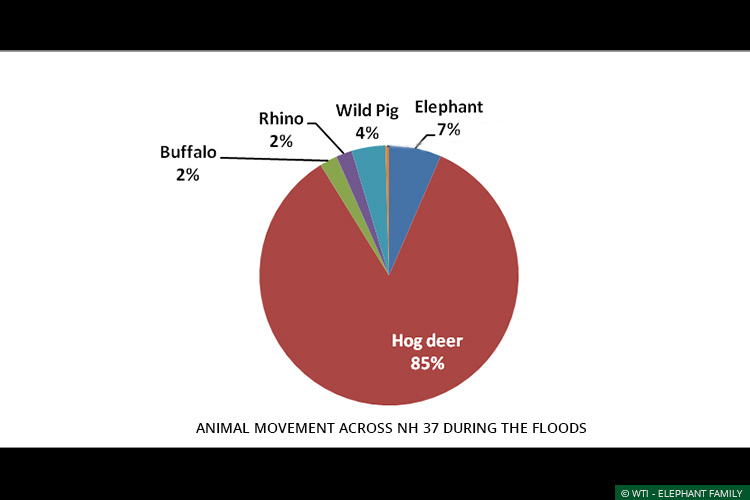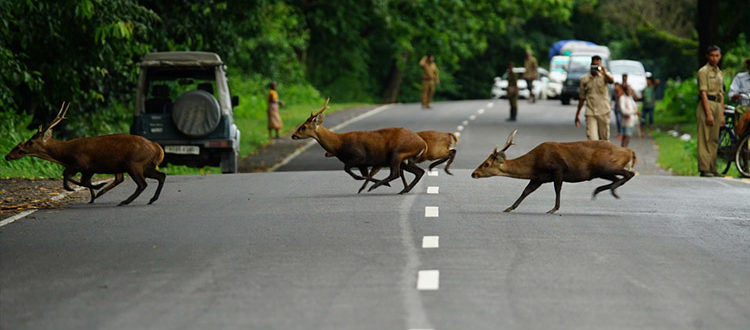Green Corridor Champions Ensure Right of Passage for Displaced Wildlife during Assam Floods
[acx_slideshow name=”GCC Assam Floods 13082017″]
GCC teams assisting displaced wildlife during the Assam floods
Kaziranga-Karbi Anglong Landscape, August 13, 2017: Wildlife Trust of India (WTI) and Elephant Family, with support from the Assam Forest Department, have developed a cadre of local individuals called the Green Corridor Champions (GCCs) to help secure five crucial elephant corridors – Amguri, Kanchanjuri, Deosur, Panbari and Haldibari – in the Kaziranga-Karbi Anglong landscape in Assam. GCC teams have been put together in partnership with two regional organisations, BHUMI and the Duarbagori Cooperative Society Limited (DBCSL).
As the wetland areas of Kaziranga National Park are inundated in the annual monsoon floods, displaced wild animals seek refuge in the nearby Karbi Anglong Hills, which lie across the busy National Highway 37 (NH 37). Apart from being vulnerable to poachers during such crossings, the animals have to contend with fast moving vehicles on the highway. To ensure the safe passage of animals during the floods, the GCCs, in coordination with the WTI-Elephant Family team and the Assam Forest Department, assisted Mobile Veterinary Service (MVS) teams of Centre for Wildlife Rehabilitation and Conservation (CWRC) by patrolling NH 37.
Five GCC patrol teams, each comprising four members, were formed in each of the elephant corridors. The teams were deployed in alternating shifts to monitor and manage traffic on the highway.
GCC teams ensured the unobstructed movement of over 900 animals within the span of a week, including elephants, rhinos, hog deer, wild buffaloes and snakes.
Working with the forest department, the GCC teams issued time cards to all vehicles in a bid to monitor their speed between checkpoints. They also assisted the CWRC teams by providing veterinary support to animals injured in road accidents. For instance, a patrol team from the DBCSL GCC found an injured hog deer near Baghmari. The team informed local veterinarian Dr Dauharu, who provided first aid to the injured animal and handed over it to a CWRC MVS team. In another incident, a deer had sought shelter inside a villager’s home in the Kanchanjuri corridor; the GCC patrolling team immediately informed the CWRC team about the situation, whereupon the deer was swiftly rescued.
An analysis of the data sheets filled in by the GCC teams revealed that they had ensured the unobstructed movement of over 900 animals within the span of a week, including elephants, rhinos, hog deer, wild pigs, wild buffaloes, monitor lizards and snakes. Of these, about 800 animals had crossed NH 37 from Kaziranga to the Karbi Anglong Hills, while over 100 animals had travelled back towards the lowlands of Kaziranga. More hog deer were found to have crossed NH 37 during the floods than any other species.

WTI plans to tie up with local organisations like DBCSL and BHUMI and form GCCs all across India, thereby institutionalising the involvement of community-based organisations in protecting and securing elephant corridors. The GCCs would work in partnership with WTI to sensitise local communities about the importance of corridors and, with the judicious and appropriate use of social, economic and technical interventions, and the vital support of local governments, help in monitoring and securing these corridors.









